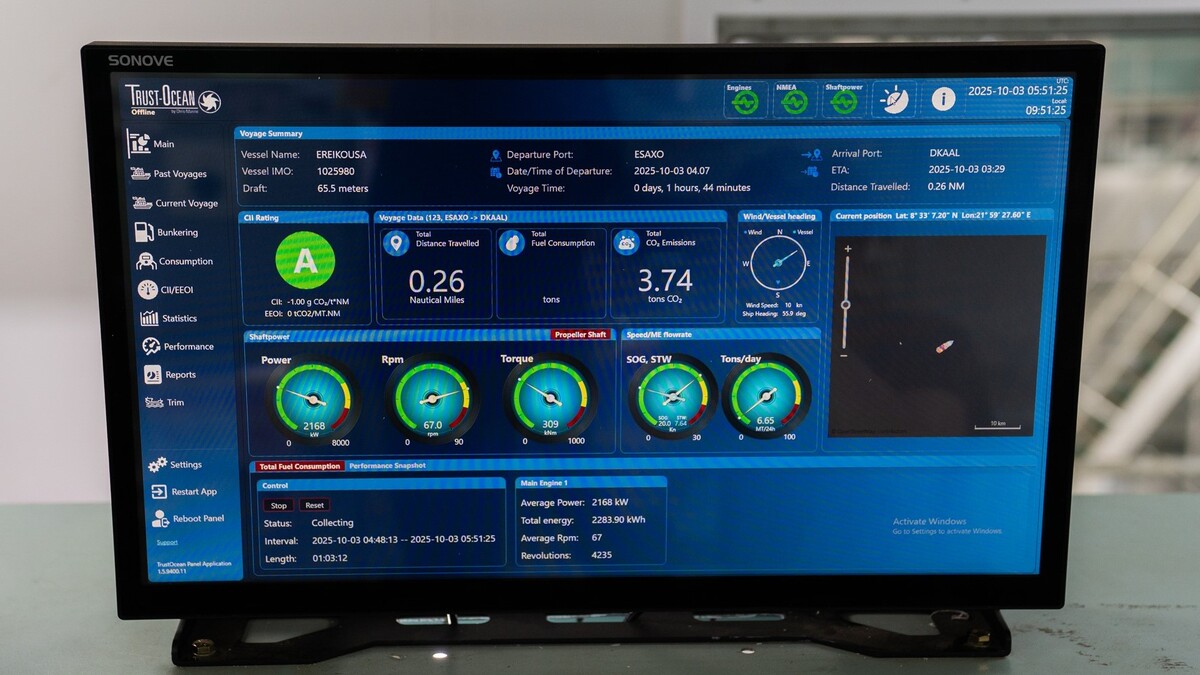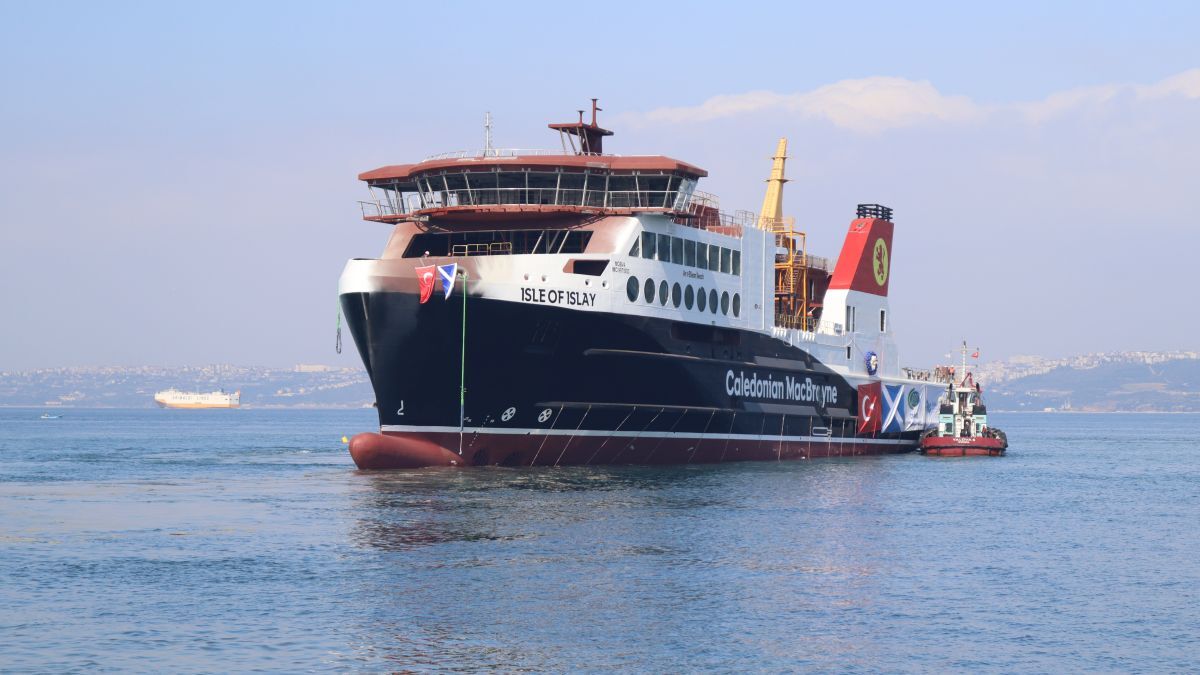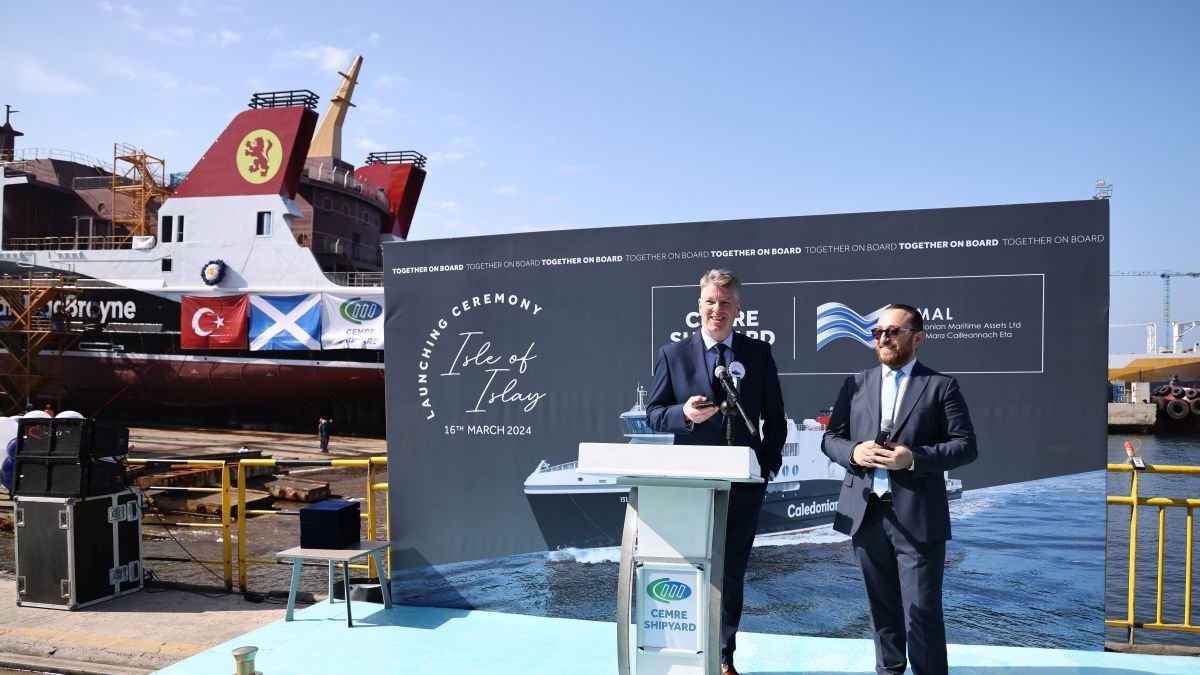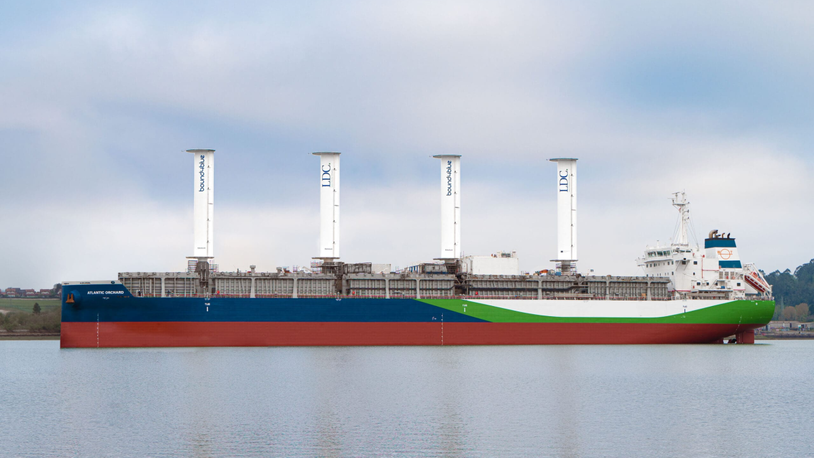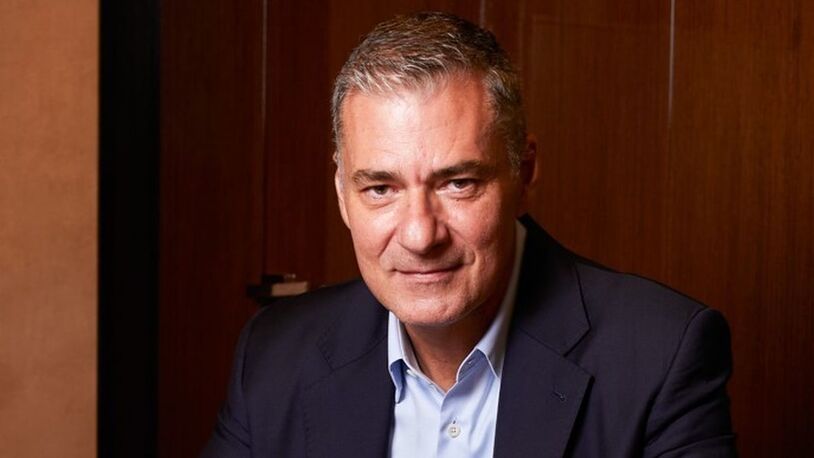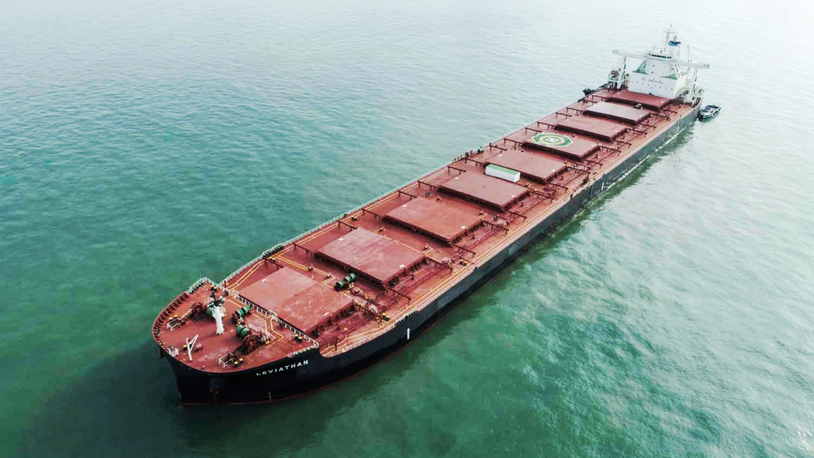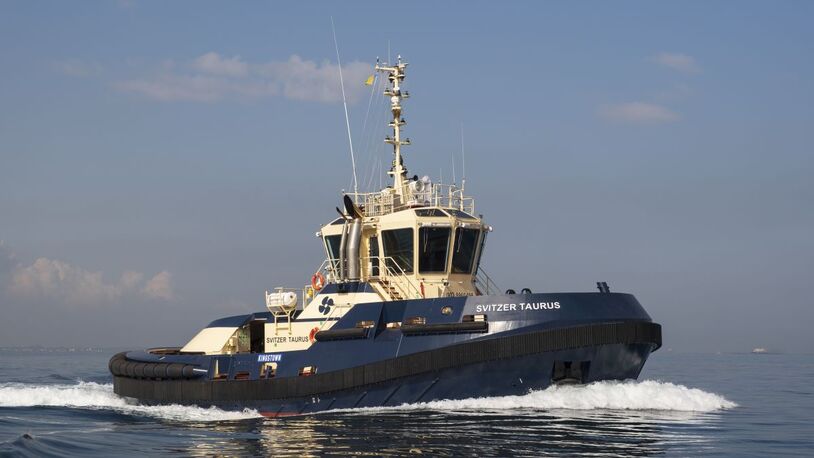Business Sectors
Events
Ship Recycling Webinar Week
Contents
Register to read more articles.
Isle of Islay: boost in reliability, manoeuvrability and capacity
CMAL reveals the benefits and technology being used in its new battery-hybrid ferry
CMAL’s hybrid ferry Isle of Islay marks several firsts for its Scottish shipowner, with new features and greater capacity for freight and vehicles.
The ferry – the first in a series of four newbuilds – is due to be delivered at the end of the year and will provide a lifeline service between Islay and Jura.
The ferry will feature an overall length of 95 m, a moulded breadth of 19 m, a maximum draught of 4 m and has been designed to displace 4,000 tonnes – as has its forthcoming sister ship Loch Indaal, slated for delivery in 2025.
Cemre Shipyard will build a further two ferries for CMAL’s service between Skye, Harris and North Uist, following an order placed by the ferry owner last year.
The ferry concept was developed by German design consultancy naValue, with LMG Marin and Cemre Shipyard providing the ship’s design.
Explaining the process of selecting the Turkish shipyard, CMAL director of vessels Jim Anderson explains, “We have a robust selection criteria, including the shipyard’s performance, financial standing, ship procurement and design, as well as the shipyard’s facilities, capacity and abilities for ships of this size, their project management and demonstration of past experience of these types of vessels.”
CMAL was also looking for an understanding of UK-flag MCA requirements. Mr Anderson singled out that the shipyard had previously built Wight Ferries’ Victoria of Wight ferry was a good reference point.
CMAL’s procurement process takes 9-10 months.
Mr Anderson says, “One of the main drivers for the vessel was the need for an increased freight capacity.”
Isle of Islay will have the capacity for up to 450 passengers and 100 cars, or 14 commercial vehicles, spread across two mezzanine car decks. This will provide a combined 65% increase in freight capacity on the Islay routes compared with the two existing vessels on the route.
CMAL technical manager Lewis Hammell comments, “While it is mainly freight focused, it is still a ropax vessel that can carry passengers. Our current vessels take up to 10 HGVs, but our new ferries can take up to 14, so that is quite an increase.”
He says despite having capacity for four extra HGVs, the ships are only 5 m longer and 2 m wider than the current vessels. The increased draught means the footprint has been increased from 3.4 m to 4.0 m.
Isle Of Islay will incorporate a hybrid diesel-electric powertrain, including a 1-MWh battery pack supplied by Leclanché, DC Switchboard supplied by Elkon with ABB inverters and four Wärtsilä 8L20 gensets, rated 1,600 kW apiece. This combination will enable a maximum speed of 16.5 knots. The vessel will also be fitted with twin Voith Schneider eVSP26 stern propulsors and two Berg bow thrusters.
Mr Hammell explains the batteries will be used for peak shaving and manoeuvring in port.
CMAL is a leader in the use of battery technology. This company is the first in the world to use batteries on ferries. Mr Anderson comments, “We have learned lots of lessons about batteries from our existing hybrid ships, and we are well placed to use them again, being the first people to use them on ferries. We have a lot of information about how batteries perform, and we know it is a long-term capital investment. There are no other solutions we can see when it comes to future fuels at the moment.”
All overnight berths at the ports Isle of Islay and its sister vessels will call at will have shore power, allowing the vessels not only to emit no emissions when in port, but also to charge the batteries overnight.
In fact, CMAL’s ports are a crucial piece of the puzzle. Mr Anderson explains, “We had to look at the bigger picture, looking not just at the vessels but at the limitations of their ports. They are many years old and were limited in terms of beam and draught. We made it our goal not to just think about the ship, but also the port infrastructure.”
CMAL received Scottish government funding for a port infrastructure development programme, alongside the four new vessels. This has seen the ports dredged and their piers upgraded.
Citing the benefits, Mr Anderson says, “By optimising the ports, we can get money back in terms of fuel and operational costs and there are massive benefits we gain with reduced emissions, along with improved manoeuvrability.”
Alongside the batteries, Isle of Islay has other emissions and fuel-saving features. Chief among these, says Mr Hammell, is the design of the ship, of the hull form compared with the hull on the previous vessel that plied the route.
The Voith Schneider eVSP stern propulsors are also distinctive. This is something CMAL has not used on ferries of this size before.
Mr Hammell explains, “Most of the fleet use controlled pitch propellers (CPP). We have used Voith thrusters before but never on major vessels, so this is a change for us. We looked at various propellers when we went out to tender, and this one had the most benefits in terms of efficiency. One of the big benefits is manoeuvrability in port compared with deploying CPPs. There is a significant increase in efficiency.”
He adds, “It is a culture change because the masters are used to controllable pitch propellers and rudders. However, they will pick it up quickly.”
The new ferry also marks a change from the rest of the CMAL fleet because it is the first major ship to deploy a diesel-electric powertrain, versus diesel mechanical.
Mr Anderson comments, “There is a larger capital cost to be paid for diesel electric. But the major benefits are that it consists of four main engines and generators, as opposed to two main engines when mechanically driven.”
He says with the latter configuration, if one main engine either breaks down or needs a maintenance overhaul, the ship cannot be operated. But with the new solution, if one engine is redundant, the ferry can still run with the remaining three engines.
This is crucial, because as Mr Anderson says, “These are lifeline ferries, so they have to sail.”
Other benefits of diesel-electric propulsion include increased speed of response of the propulsion.
Aside from the propulsion, a major focus for CMAL when it came to the new ferries was accessibility. Mr Anderson says, “Accessibility for ferry users was a major consideration, for both vehicle decks and passenger accommodation. It was something we carefully thought through, from making sure people could open doors easily, to access for wheelchair users and people with reduced mobility.”
In terms of looking to the future, Isle of Islay’s main power distributer is a DC switchboard, meaning the ferries can easily connect to different power sources going forward, such as fuel cells. There is also extra capacity for more batteries to be added in the future.
CMAL currently has a contract notice for seven all-electric ferries in the public domain. The aim is to award the contract in March next year for these zero-emissions ferries.
Riviera’s Maritime Hybrid, Electric & Hydrogen Fuel Cells Conference 2024 will be held in Bergen, Norway, 29-31 October 2024. Click here for more information on this industry-leading event.
Related to this Story
Events
Ship Recycling Webinar Week
International Bulk Shipping Conference 2025
Tankers 2030 Conference
Maritime Navigation Innovation Webinar Week
© 2024 Riviera Maritime Media Ltd.

